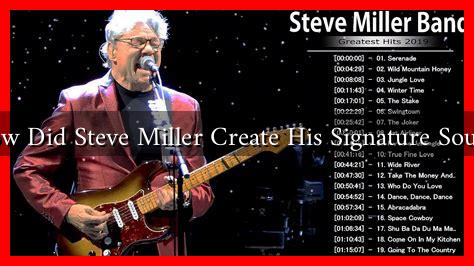-
Table of Contents
How Did Steve Miller Create His Signature Sound?
Steve Miller, an iconic figure in the world of rock and blues, is best known for his unique sound that blends elements of rock, blues, and pop. His music has resonated with audiences for decades, thanks to his innovative approach to songwriting and instrumentation. This article delves into the key elements that contributed to the creation of Steve Miller’s signature sound, exploring his influences, techniques, and the evolution of his music.
The Influences Behind the Sound
Steve Miller’s musical journey began in the 1960s, a time when various genres were merging and evolving. Several influences shaped his distinctive style:
- Blues Roots: Growing up in a musical family, Miller was exposed to blues legends like Muddy Waters and B.B. King.
. Their emotive guitar playing and storytelling deeply influenced his songwriting.
- San Francisco Sound: Miller was part of the San Francisco music scene, which was characterized by psychedelic rock. Bands like Jefferson Airplane and the Grateful Dead inspired him to experiment with sound and structure.
- Pop Sensibilities: Miller’s knack for catchy melodies and hooks can be traced back to his appreciation for pop music. He often incorporated these elements into his rock compositions, making them accessible to a broader audience.
Instrumentation and Production Techniques
One of the hallmarks of Miller’s sound is his innovative use of instrumentation and production techniques. Here are some key aspects:
- Guitar Work: Miller is known for his smooth, melodic guitar solos. He often employs a combination of clean tones and overdriven sounds, creating a rich texture. His use of the Gibson Les Paul and Fender Stratocaster guitars has become a signature aspect of his style.
- Keyboard Arrangements: The incorporation of keyboards, particularly the Hammond organ, adds depth to his music. Tracks like “Fly Like an Eagle” showcase how keyboard layers can enhance the overall sound.
- Production Techniques: Miller’s collaboration with producer Glyn Johns in the 1970s was pivotal. Johns’ expertise in capturing live energy in the studio helped Miller achieve a polished yet organic sound.
Songwriting and Lyrical Themes
Miller’s songwriting is another critical component of his signature sound. His lyrics often reflect a blend of personal experiences and universal themes:
- Storytelling: Many of Miller’s songs tell stories that resonate with listeners. For example, “The Joker” combines humor and introspection, making it relatable and memorable.
- Imagery and Metaphor: Miller frequently uses vivid imagery and metaphor in his lyrics. This technique adds layers of meaning, inviting listeners to interpret the songs in their own way.
- Catchy Hooks: His ability to craft infectious hooks is evident in hits like “Take the Money and Run” and “Abracadabra.” These hooks are often simple yet effective, making them easy to sing along to.
The Evolution of His Sound
Over the years, Steve Miller’s sound has evolved while maintaining its core elements. His willingness to experiment with different styles has kept his music fresh:
- Incorporation of New Genres: In the 1980s, Miller began to incorporate elements of new wave and synth-pop, as seen in “Abracadabra.” This shift showcased his adaptability and willingness to embrace contemporary trends.
- Return to Roots: In recent years, Miller has returned to his blues roots, releasing albums that pay homage to the genre that started it all. This full-circle journey highlights his deep connection to his musical influences.
Conclusion
Steve Miller’s signature sound is a product of diverse influences, innovative instrumentation, and masterful songwriting. His ability to blend rock, blues, and pop has not only defined his career but also left a lasting impact on the music industry. As he continues to evolve as an artist, Miller remains a testament to the power of creativity and adaptability in music.
For more insights into Steve Miller’s music and career, you can visit Steve Miller Band’s official website.





